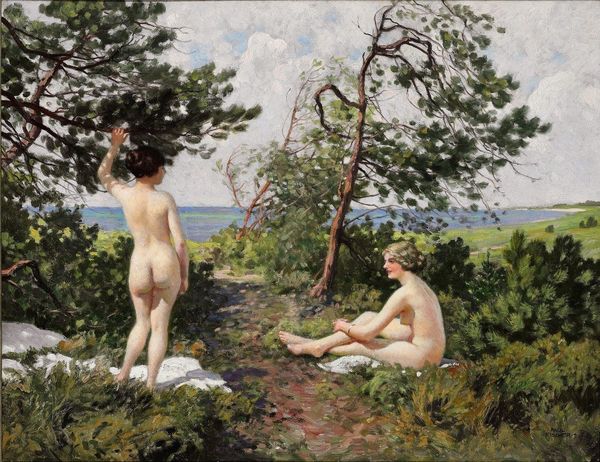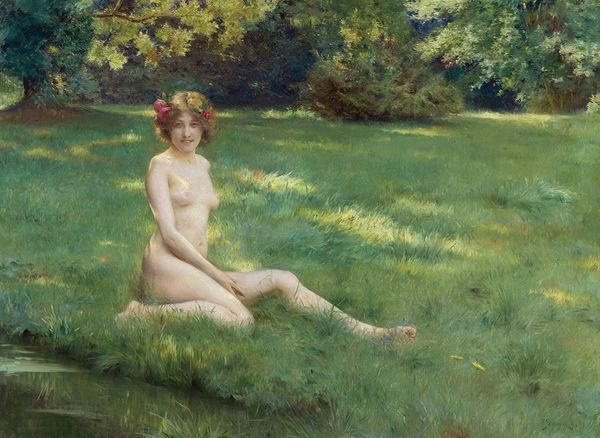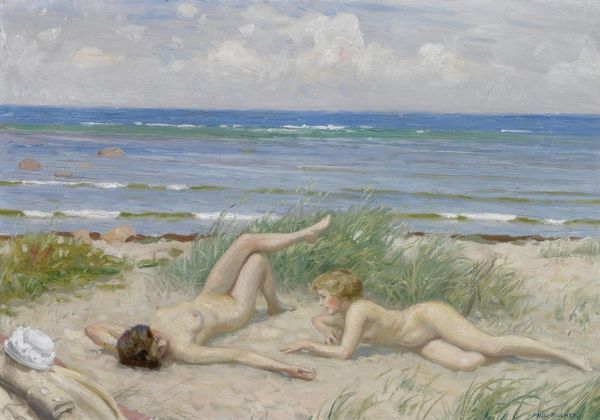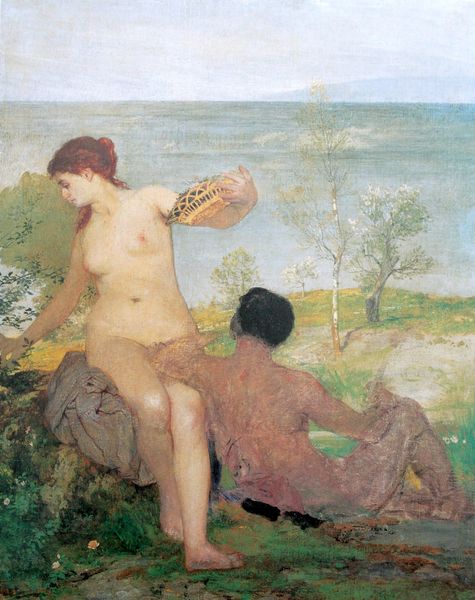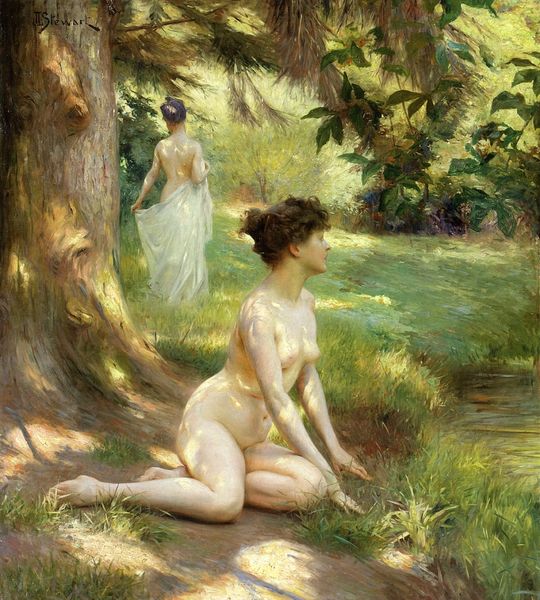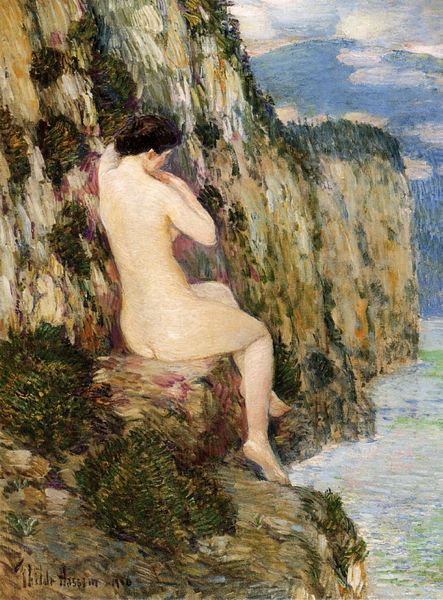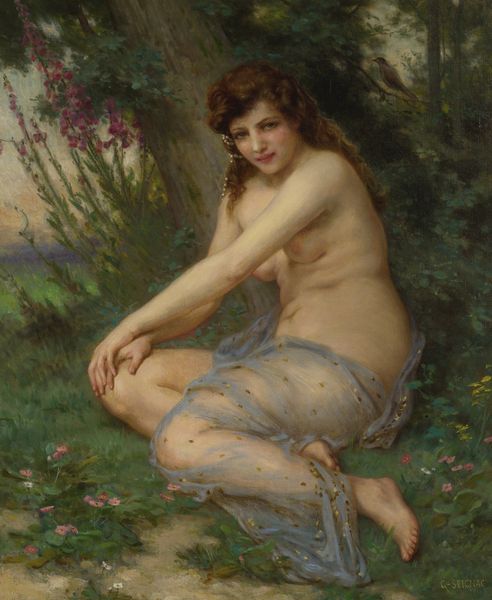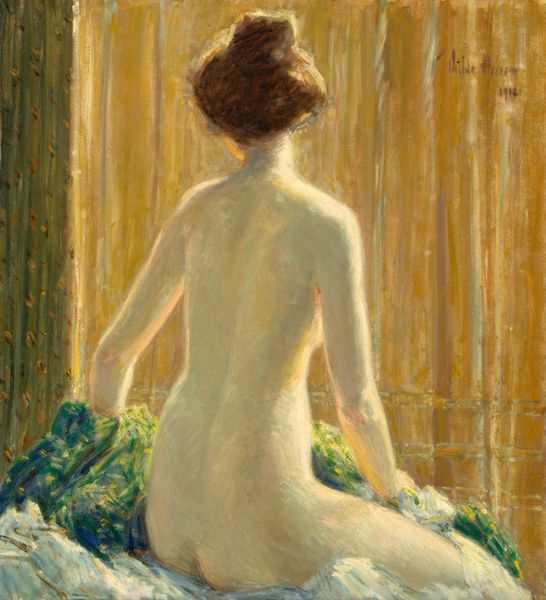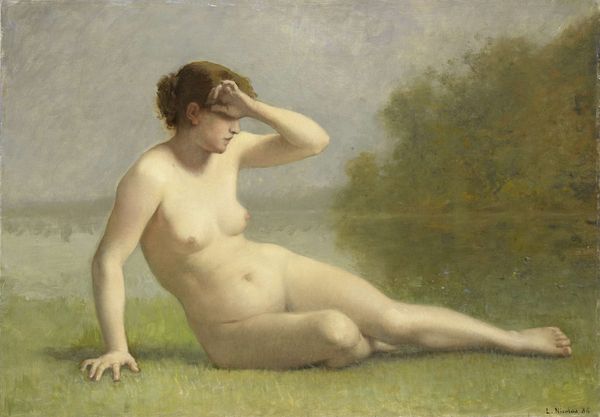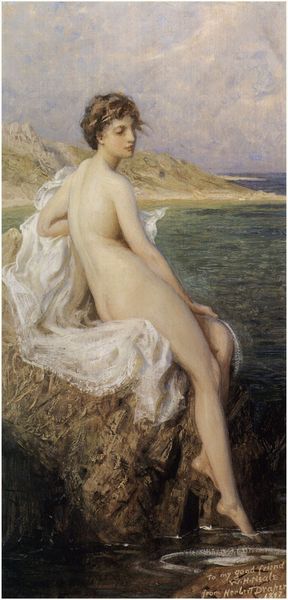
Copyright: Public Domain: Artvee
Curator: This is Paul Fischer's "Three Bathers at the Seashore," painted in 1913. Editor: It's evocative. A tranquil scene, slightly unsettling with its contrasting depiction of female nudity. I’m curious, how was it made? Curator: Fischer, primarily known for his urban scenes, used oil on canvas here. I think it’s useful to look at his context – Denmark in the early 20th century, a period of burgeoning women's rights, alongside evolving ideas surrounding female representation in art. The piece sits interestingly at that intersection. Editor: The canvas certainly dictates the hazy feel, typical of his plein-air method. He also carefully positions labor, too, or perhaps its leisure equivalent. It's less about the formal bathing act, more about what that reveals on its making about social relations and a privileged lifestyle. Curator: The figure arranging her hair—almost reclaiming her sensuality after bathing—resonates with a societal renegotiation of female agency, which reflects changing gender dynamics of the time. The materiality allows Fischer to place these figures in an idealized, almost dreamlike vision, and he really considers not just their activity, but their status, placing them at the intersection of tradition and new freedoms. Editor: Definitely idealized, even staged, within that naturalized setting. Think about where this vision aligns to its reception: what processes made this work ready to the point of sale and consumption and whose vision benefits? Curator: Well, it offers insights into art and societal norms during Fischer’s lifetime. And looking closely, considering his work in the context of broader discussions about representation, gender, and labor— we find complexities. Editor: It's precisely those points of intersection that deepen the narrative. These bathers end up doing far more than bathing. Curator: Exactly. There's so much revealed in their activity, the medium in which it’s shown, the labor that goes unacknowledged behind these seemingly private, languid moments... Editor: A moment captured and consumed through so many interwoven levels.
Comments
No comments
Be the first to comment and join the conversation on the ultimate creative platform.
